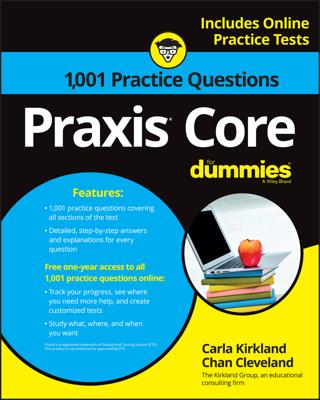Success on the math section of the Praxis Core exam requires knowledge of many word meanings and rules. These are some of the major word definitions and rules you need to know:
A factor of a number goes into it a whole number of times; a number is multiplied by an integer to get a multiple of itself.
To convert a decimal number to a percent, move the decimal two places to the right and add a percent sign (%); to convert a percent to a decimal number, drop the percent sign and move the decimal two places to the left.
To multiply a variable to any power by the same variable to any power, give the variable an exponent that is the sum of the exponents involved in the multiplying.
Like terms have exactly the same variables with exactly the same exponents for each. Only like terms can be combined.
To solve an equation or inequality, get the variable by itself on one side by doing the opposite of everything that is being done to it to both entire sides.
You must change the direction of an inequality sign if you multiply or divide both sides by a negative or if you switch the sides.
Vertical angles are congruent.
Supplementary angles have measures with a sum of 180°. Complementary angles have measures with a sum of 90°.
Angles that form a linear pair are supplementary.
The sum of the interior angles of a triangle is 180°. The sum of the interior angles of a quadrilateral is 360°.
Similar polygons have the same shape but not necessarily the same size. Their corresponding side measures are in proportion, which means that they have the same ratio in every case.
The sum of the squares of the leg measures of a right triangle is equal to the square of the hypotenuse measure.
The mean of a set of data is the average, the median is the middle number or the mean of the two middle numbers when the numbers are in order, and the mode is the number that appears the most.
The probability of an event is the number of qualifying outcomes divided by the number of possible outcomes.
A number expressed in scientific notation is a single digit followed by a decimal and the digits that come after the decimal multiplied by 10 with an exponent.

